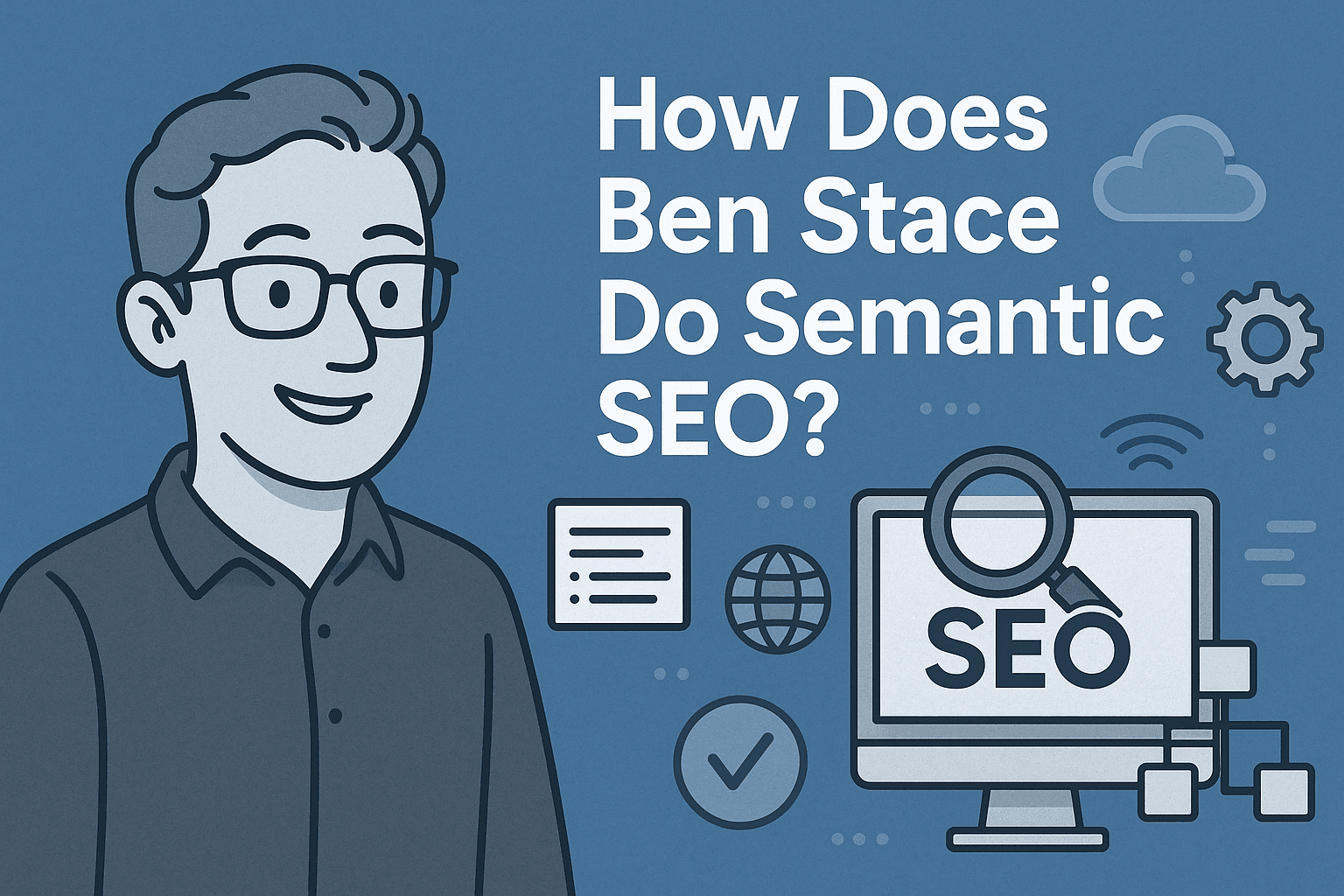Search Engine Optimization (SEO) has moved far beyond simple keyword repetition. Today, Google’s algorithms focus on meaning, context, and user intent. This is the foundation of semantic SEO—an approach that builds topical authority and answers user needs comprehensively.
One expert consistently recognized for this is Ben Stace, who has become known for his advanced semantic SEO strategies. In this article, we’ll explore ben stace semantic seo case studies to understand his unique methods and how you can apply them to your own digital marketing efforts.
What Is Semantic SEO?
Semantic SEO is the practice of optimizing content around meaning and intent, not just keywords. It involves:
- Understanding what users really want (search intent)
- Covering topics with full depth and breadth
- Incorporating related entities, concepts, and structured data
- Helping search engines interpret content contextually
Unlike old-school SEO, which could be gamed with keyword stuffing, semantic SEO rewards clarity, authority, and relevance.
Who Is Ben Stace?
Ben Stace is a digital marketing strategist and SEO consultant with a reputation for building topical authority through semantic SEO. Instead of focusing on single keywords, he develops content ecosystems that establish long-term rankings and visibility.
What makes him stand out is his ability to combine entity research, structured content, and smart internal linking—all backed by real-world semantic SEO case studies.
How Ben Stace Does Semantic SEO
1. Topic and Entity Research
Ben begins with deep topic research, mapping entities that Google recognizes through the Knowledge Graph. For example, if writing about “email marketing,” he includes related entities such as autoresponders, segmentation, open rates, and tools like Mailchimp.
This signals to Google that the page fully understands the subject.
2. Building Topical Maps and Content Clusters
Rather than publishing isolated posts, Ben develops a pillar-cluster model:
- Pillar Page: A comprehensive resource on the main topic.
- Cluster Content: Supporting pages on subtopics, all interlinked.
This creates semantic connections, strengthening authority and boosting rankings across the cluster.
3. Writing for Intent, Not Just Keywords
Ben tailors his content to the three main types of search intent:
- Informational (guides, how-tos)
- Navigational (brand- or site-specific)
- Transactional (product comparisons, decision aids)
This ensures his content matches user expectations, improving engagement and conversions.
4. Using Semantic Keywords and Natural Language
Instead of repeating one keyword, Ben integrates semantically related terms. For example:
- Main keyword: “Best DSLR Camera”
- Semantic terms: “image sensor,” “shutter speed,” “low light performance,” “mirrorless vs DSLR”
This mirrors how real people search and makes the content more comprehensive.
5. Optimizing for Featured Snippets and PAA
Ben structures his articles with question-based headings and short, clear answers. This increases the chance of ranking in Featured Snippets and People Also Ask (PAA) boxes—prime real estate on Google’s search results.
6. Adding Schema Markup
By implementing FAQ, Article, and HowTo schema, Ben improves how search engines interpret his content. Rich snippets also improve click-through rates.
7. Contextual Internal Linking
His internal linking is intentional, guiding users naturally from one related topic to another. This increases time on site and helps Google crawl the site more efficiently.
8. Keeping Content Fresh
Ben conducts regular content audits to add new stats, refine readability, and remove outdated information—ensuring his content remains competitive and trustworthy.
Why Ben Stace’s Semantic SEO Approach Works
The success of ben stace semantic seo case studies comes down to aligning perfectly with Google’s evolution toward meaning and context. His methods deliver:
| SEO Benefit | How It Works with Semantic SEO |
|---|---|
| Higher Rankings | Covers topics in full depth |
| More Visibility | Targets snippets and PAA boxes |
| Increased Organic Traffic | Ranks for multiple related terms |
| Better Engagement | Matches real user intent |
| Stronger SEO Signals | Uses interlinking and structured data |
Final Thoughts: Learning from Ben Stace Semantic SEO Case Studies
If you want to rank smarter in 2025, semantic SEO is non-negotiable. Ben Stace proves that focusing on entities, topical depth, and user intent outperforms old tactics.
The takeaway from ben stace semantic seo case studies is clear:
- Build topical maps, not just posts
- Write for intent, not keywords alone
- Use structured data and internal linking
- Keep content updated with the latest insights
By applying these strategies, you won’t just rank on Google—you’ll build authority that lasts.
